Fox Racing Shox lineup highlighted by new 15mm thru-axle standard
RockShox has taken particular interest in Fox and Shimano's new 15mm thru-axle system, particularly...
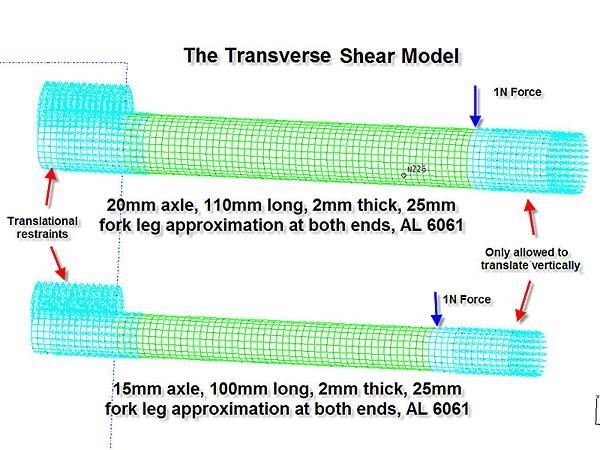
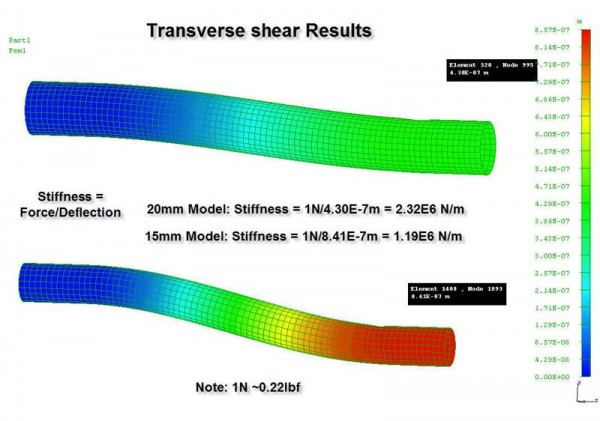
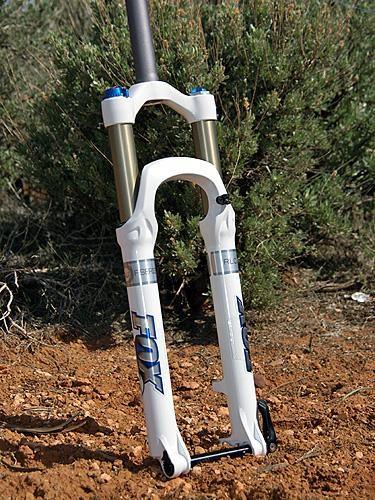
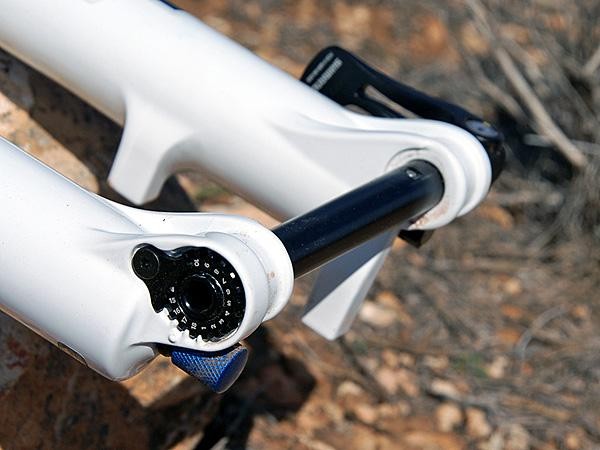
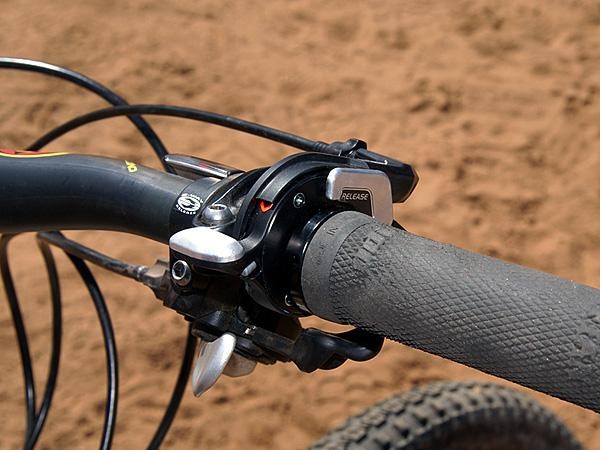
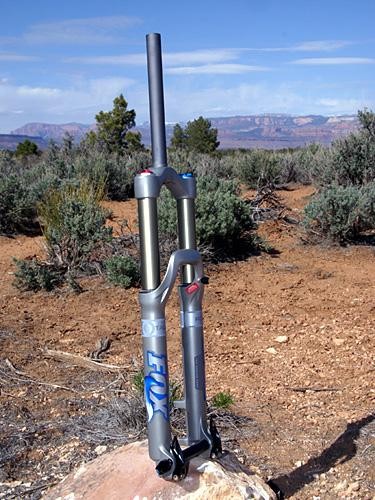
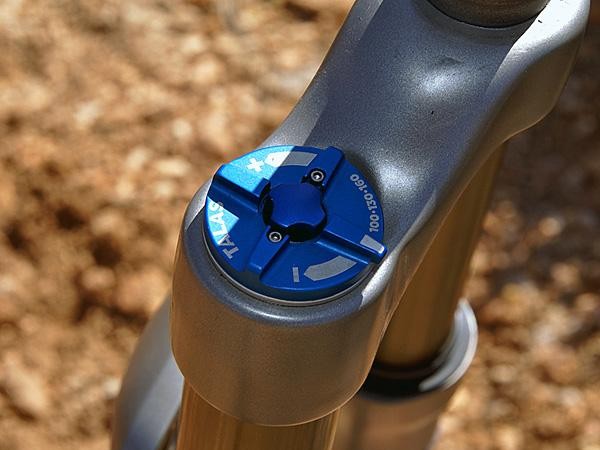
Tech Feature: Fox Racing Shox 2009 model year introduction, April 21, 2008
New 32 chassis signals introduction of 15QR
It's only late April 2008 and Fox Racing Shox is already debuting its 2009 lineup, yet the new collection will almost certainly be best remembered for its new '15QR' 15mm thru-axle standard which the company will offer as optional equipment on the entirety of its 32mm chassis segment (with the exception of the F29).
Fox doesn't intend 15QR to replace any existing thru-axle format and indeed, the industry-standard 20mm system is heavily utilized elsewhere in the range as usual. Rather, Fox aims 15QR at cross-country and all-mountain riders who are looking for more steering precision than a standard 9mm quick-release configuration but less weight than a typical 20mm setup. According to Fox's figures for its 2009 model year forks, 15QR is 25 percent stiffer in transverse shear and 15 percent stiffer in torsion than the standard open dropout quick-release versions yet only adds about 100g (excluding the hub but including the 15QR axle and standard skewer).
Debates about yet another 'standard' aside (see sidebar), 15QR is well-designed and executed. Co-developed with Shimano, the one-handed system requires only an initial setup step to ensure the proper final lever position... and that's about it. Operation is very similar to a standard quick-release and, coincidentally, nearly identical to Rock Shox's Maxle system. Obviously, Shimano will offer hubs and wheels to accommodate the new size but the standard is open to anyone who wants to adopt it. According to Fox, both DT Swiss and Mavic already have supporting hubs and wheels ready to go.
We had the opportunity to ride 2008 model year 9mm quick-release forks in an all-day back-to-back session against the 2009 15QR models at Utah's Gooseberry Mesa and noticed the increased steering precision, especially in trickier situations where the added control can mean the difference between a crowd-pleasing slingshot out of a rutted turn or an (equally crowd-pleasing) expansive yard sale. Even so, we'll be sure to secure a test sample straight away and report back with a more in-depth evaluation.
The upper assembly of the 32 chassis receives significant updates as well, yielding modest weight savings of 20-70g depending on model (as such, '09 15QR models are roughly the same weight as '08 open dropout models). New forged crowns and 1 1/8" steerer tubes across the board are said to be stronger than '08 versions; 140mm-travel 32 forks also get a lighter and smoother running set of lower legs. Last year's well-received F29 will now get a 120mm-travel version as well as lower priced RL versions across the entire travel range.
Get The Leadout Newsletter
The latest race content, interviews, features, reviews and expert buying guides, direct to your inbox!
The tapered and oversized 1 1/8"-to-1 1/2" steerer tube format used by Trek will be an option across the 32 range, although some will only be available to bicycle manufacturers. This is fairly interesting news on its own but it also indicates quite strongly that we can expect to the see the size standard used in more of Trek's lineup for 2009, most likely in the new Fuel. Fox officials weren't able to say whether or not the forks would also be compatible with Specialized's similarly sized front end but the inclusion of the 29"-specific F29 in this grouping tells us that at least one big-wheeled company will use the tapered-and-oversized configuration for 2009 as well.
After years of sponsored rider exclusives, Fox has finally decided to offer consumers a remote lockout lever. As with 15QR, the inline lever was co-designed and manufactured with Shimano. Operation on the trail was reasonably intuitive although the release requires a slight hand position shift and some riders may find the lockout lever to slightly interfere with trigger shifter thumb paddles. Sealed construction promises reasonable durability. The lever will be included as standard equipment on the new Remote RL 80/100/120 models but the widget will also be retrofittable to other forks with crown-located lockout levers. Total added weight is approximately 90g.
Chassis updates to long travel platforms and rear shocks
Changes to the bigger-boned 36 and 40 platforms are decidedly more subtle than on the 32. All 36-series forks get a lighter forged crown and lighter steerer tubes across the board. As with the 32, all 36 forks will be offered in the tapered and oversized 1 1/8"-to-1 1/2" size format.
Potential buyers of Fox's 40 fork will now be happy to hear that last year's upper crown will be replaced by a direct mount-type version that uses the industry standard four-bolt pattern for integrated stems.
The popular DHX Air rear shock receives some minor revisions as well, in particular a substantially larger ProPedal lever that now rotates just 90 degrees lock-to-lock. The angled air valve incorporated into the RP23 last year also finds its way on to the revamped DHX Air for easier inflation.
Internal changes
Fox's TALAS adjustable-travel air spring system is widely used but has long suffered from criticism that it harbored too much stiction, especially when compared to the fixed-travel Float air spring. Fox has thankfully redesigned the system for 2009 with fewer seals for a noticeably more Float-like feel, improved top cap seals for better longevity and steeper spring curves (making it more of a 'TA' than 'TALAS' for those of you that know the acronym). The current 100-130-160mm and 100-120-140mm settings carry over from last year but the new dial is now easier to turn. Field serviceability is also vastly improved (no special tool required!) and the revised system is backwards-compatible with existing chassis.
36 and 40 forks also get new FIT cartridges with more compression stroke damping control, improved bottom-out resistance, more tangible distinctions between the low-speed and high-speed adjustments on RC2-equipped models, and new seals for better reliability. ProPedal-equipped RP23 and RP2 shocks also now deliver more refined mid-stroke compression damping after the platform threshold is exceeded and a broader rebound damping adjustment range (mostly on the faster end). 32 fork dampers remain unchanged from last year's settings.
Will 2009 be a good year for Fox Racing Shox?
The new 15QR standard is undoubtedly controversial and we'll have to wait and see if it truly takes hold within the industry beyond the early adopters. We're on the fence in the meantime but wholly embrace the other updates as nearly all of them are evolutionary refinements of an already excellent product line. As added benefit, many of them are even retrofittable to existing models. Our initial test rides suggest that the updates are genuine improvements, too, and most riders should be able to feel the internal changes themselves.
Photography
For a thumbnail gallery of these images, click here
Images by James Huang/Cyclingnews.com
- Fox Racing Shox's 2009 lineup is highlighted by the 15mm thru-axle standard that it developed in conjunction with Shimano.
- According to Fox and Shimano , the new 15QR system is lighter than 20mm setups yet substantially stiffer than standard 9mm quick-release configurations.
- The set-and-forget design requires only an initial setup step then is admittedly remarkably easy to use (and is ironically similar in operation to Rock Shox's Maxle system).
- Shimano will obviously offer hubs and wheels to go along with its new standard, but DT Swiss and Mavic have reportedly signed on as well.
- The new 15mm 'E-Thru' front hub is similar in overall design to Shimano's 20mm options but downsized and lightened up for the application.
- Not surprisingly, Shimano retains the Center Lock style of rotor attachment but the smaller 15mm hub shell allows the use of the standard-sized rotor splines, not the oversized ones as found on Hone and Saint.
- After years of development , Fox finally debuts a remote lock-out version to consumers.
- The lockout-compatible cartridge can be retrofitted into current 32mm chassis forks.
- As with the 15mm thru-axle system , the lockout lever was designed in cooperation with Shimano.
- A simple push of the thumb activates the lockout and a flick of the index finger returns the fork to open mode.
- Clean cable routing for the lockout line prevents unnecessary housing rub.
- All 32-series forks also get a revised crowns and steerers for lighter weight.
- The 36-series forks are heavily redesigned as well , although most of the changes are internal such as the revamped FIT cartridges.
- Fox continues to use the beefier 20mm thru-axle system on its 36 and 40-series forks.
- Fox has completely redesigned its TALAS adjustable travel system for smoother operation and easier overhauling.
- 36-series forks get a revised crown.
Images by Fox Racing Shox
- The dual-crown 40 fork also gets a revised FIT damper cartridge as well as a new upper crown that is compatible with integrated stems.
- The venerable RP2 and RP23 rear shocks receive updated damper settings for smoother mid-stroke operation and more controlled rebound.
Images by James Huang/Cyclingnews.com
- The DHX Air gets a larger and more accessible ProPedal lever that also now rotates just 90 degrees.
- The air valve on the DHX Air has also been relocated for easier access.
- Fox Racing Shox mechanics are hard at work in the Utah desert preparing test bikes and forks.
- The Yeti AS-R was a fitting test platform for the shorter-travel forks.
- Keep an eye out for the Fox Racing Shox rig at a race near you this season.
- And yes, even the truck is Fox-equipped.
Images by Tom Torrance
- Even if Fox and Shimano's new 15mm thru-axle is slightly lighter than the currently accepted 20mm system…
- …it looks to be substantially less rigid (although still stiffer than a 9mm quick release). Is it worth it?